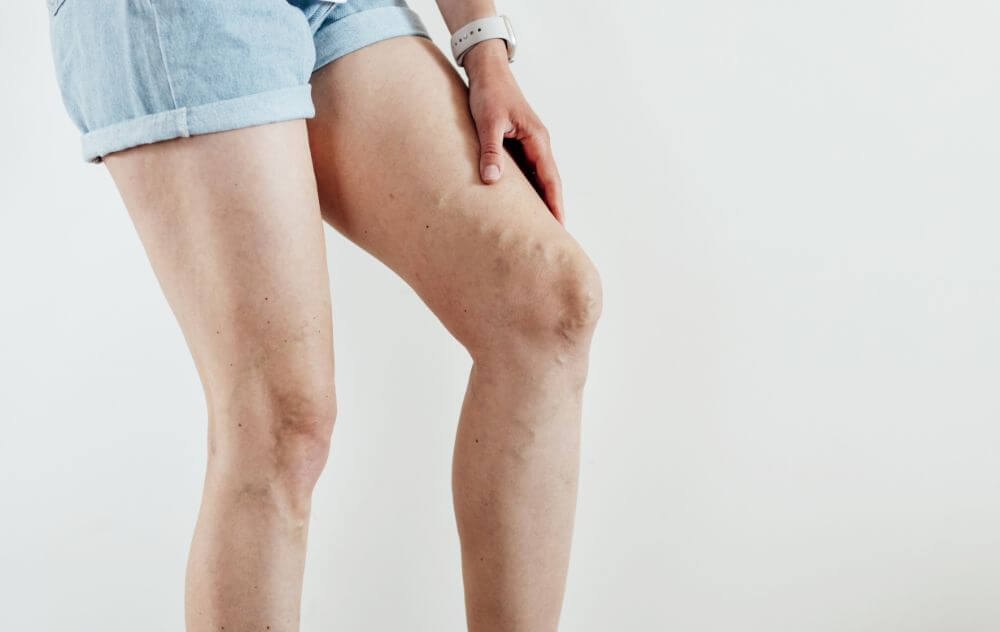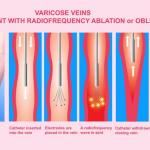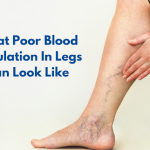
Leg pain can take various forms and forms; there certainly isn’t one general condition that covers all symptoms or causes.
However, there are a few categories that 99% of leg pain falls into.
In order for you to better know and understand the leg pain you’re feeling (so that you can seek out the right treatment), today we are going to share with you the categories that leg pain typically falls under.
Quick and Easy Online Symptom Quiz
Types of Leg Pain
Sciatica
Sciatica is pretty easy to pick out of the leg pain varieties — it takes the form of shooting pain down the back of your leg.
Isn’t the sciatic nerve a nerve in your back? So how does a nerve that’s in your back cause shooting pain in your leg? The sciatic nerve is actually a nerve that starts in your lower back but goes down into your legs.
The body is all connected, as you will see even more of as you read on.
Leg cramps
One of the main causes of leg cramps is dehydration.
Low levels of water can cause the salt levels in your body to drop, which then can lead to muscle cramps.
Leg cramps also happen as a result of overuse from exercise or sports. And the exercise doesn’t need to be anything extreme to trigger leg cramps — you can get leg cramps simply from walking more than you’re used to.
The good thing about leg cramps is that they are fairly short-lived (usually just a few minutes at most), and you can reduce the pain by stretching, drinking water, and resting your body.
Thigh pain
Thigh pain is something that people who are in jobs that require carrying a heavy belt suffer from (think construction worker, plumber, police officer, etc.).
The weight of the belt they’re nearly constantly wearing causes a buildup of pressure on the nerve around the hip, and that pressure is transformed to pain that you’ll feel down your entire thigh.
The solution for this one is pretty simple: carry a lighter belt to lessen the pressure.
Achilles tendon problems
This issue is something that women who live in high heels, or athletes who are overusing their tendons may find themselves dealing with.
Achilles tendon injury takes the form of pain above your heel bone.
If you pay attention to this pain when it first strikes, all you’ll have to do is ice your heel and rest. However, if you push through the pain and keep wearing those high heels, or overexerting your body, then you run the risk of rupturing the tendon.
Then, chances are good you’re looking at surgery in your near future.
Get Directions to a Clinic Near You
Knee pain
If you are someone who kneels often, and especially if you’re someone who kneels on hard surfaces regularly, then you should be cushioning your knees as a cautionary move.
However, if you’re already suffering from pain in your knees that happens when you move your knee joint, or when you press on your knee, then you may be suffering from bursitis.
Bursitis may also show itself via a swollen or red knee joint.
But, thankfully, it isn’t as scary as it sounds.
Bursitis can be fixed with some pain relievers, ice, and by resting your body.
However, if you find that the pain doesn’t subside by doing the above things, then you may be looking at a more serious issue, and you should see a knee specialist.
Growing pain
We’ve all been here — growing is something that throws our bodies into all kinds of funks and, in this case, growing pains can take the form of big-time leg cramps and pain.
Many growing kids find themselves suffering these pains during the night when their body finally has a chance to rest.
And, it’s nothing to worry about — it’s just part of the natural growth process. As kids age, their bones grow, which causes their muscle tendons to stretch.
This stretching of the muscle tendons means pain.
When your kid is suffering from these growing pains, they’ll need to stretch and ice the areas, and resort to pain relievers if the pain is too much.
How To Reduce Leg Pain
Though we offer many quick and easy remedies above for the various types of leg pain you may be feeling, there are additional strategies you can introduce to your everyday life that will greatly reduce the chances that you’ll ever get the above leg pains in the first place.
Lose Weight
Those who are overweight are constantly putting a great deal of strain on their legs. By losing even just a few pounds, you may notice a drastic difference. The best way to lose that weight is to change your diet, and incorporate physical activity into your daily routine.
Walk
Speaking of physical activity…
Walking just 30 minutes a day, a minimum of 3 times a week will bring drastic improvements to your overall health, including your legs.
Walking increases your muscle strength and also helps to deliver oxygen to your leg muscles, which oftentimes doesn’t happen when you’re used to sitting for extended periods of time.
While you may experience a bit of pain at first when walking for 30 minutes if you’re not used to it, push yourself and in a few weeks’ time, you’ll soon find that you no longer suffer from any pain.
You’ll also love the additional benefits that walking, such as:
- Improved mood
- Improved balance and coordination
- Strengthening of bones and muscles
- Prevention or management of conditions such as heart disease, high blood pressure, and type 2 diabetes
- Maintenance of a healthy weight
Stop smoking
Smoking leads to a seemingly never-ending list of health issues, one of which is constriction of the arteries.
This constriction keeps your blood from properly flowing, which can cause long-term damage to your arteries and lead to serious blood clots.
By quitting, you are opening up your arteries to function properly, which keeps a number of issues at bay.
Keep blood sugar in check
Too high blood sugar puts you at risk of diabetes, which can cause arterial disease and lower leg pain, among many other health problems. You can keep your blood sugar low by eating healthy and exercising regularly.
If you have any questions about whether your leg issues might be a sign of something else you can always read more about understanding vein disease to decide whether you are in need of a consultation with USA Vein Clinics.





